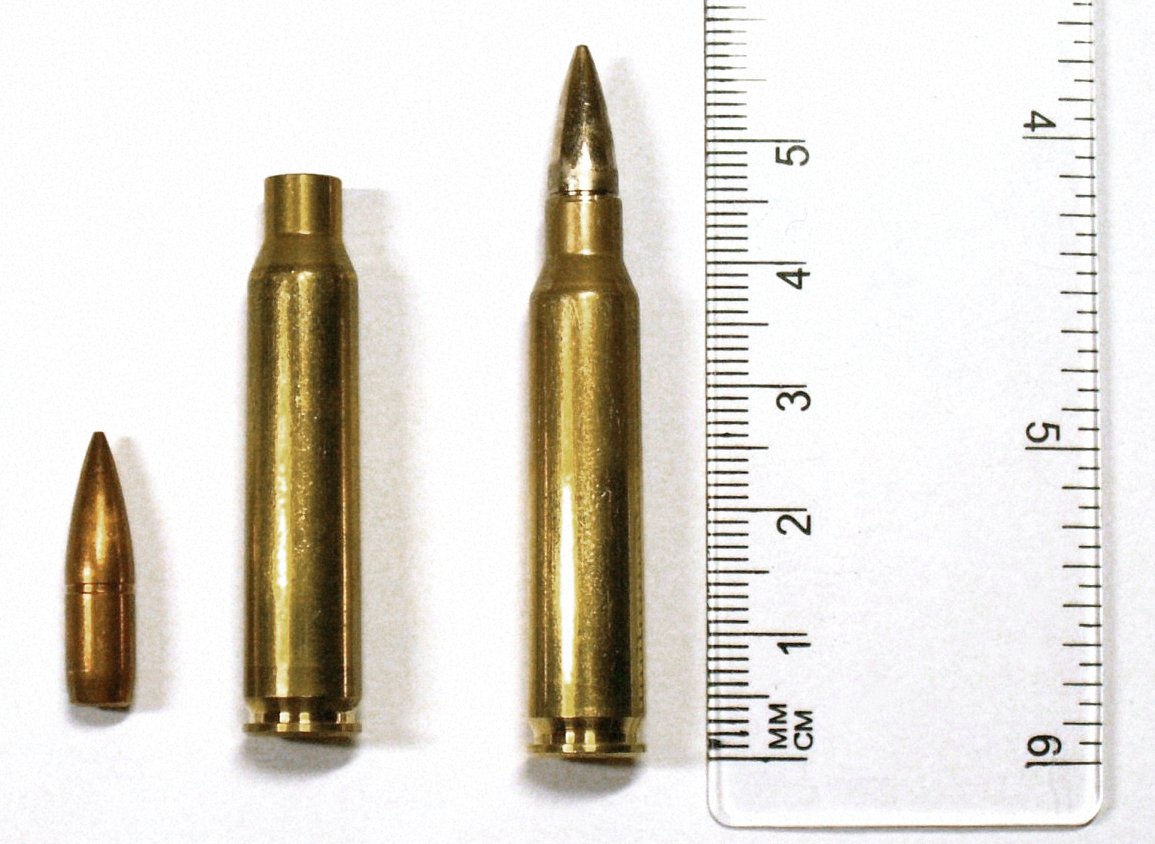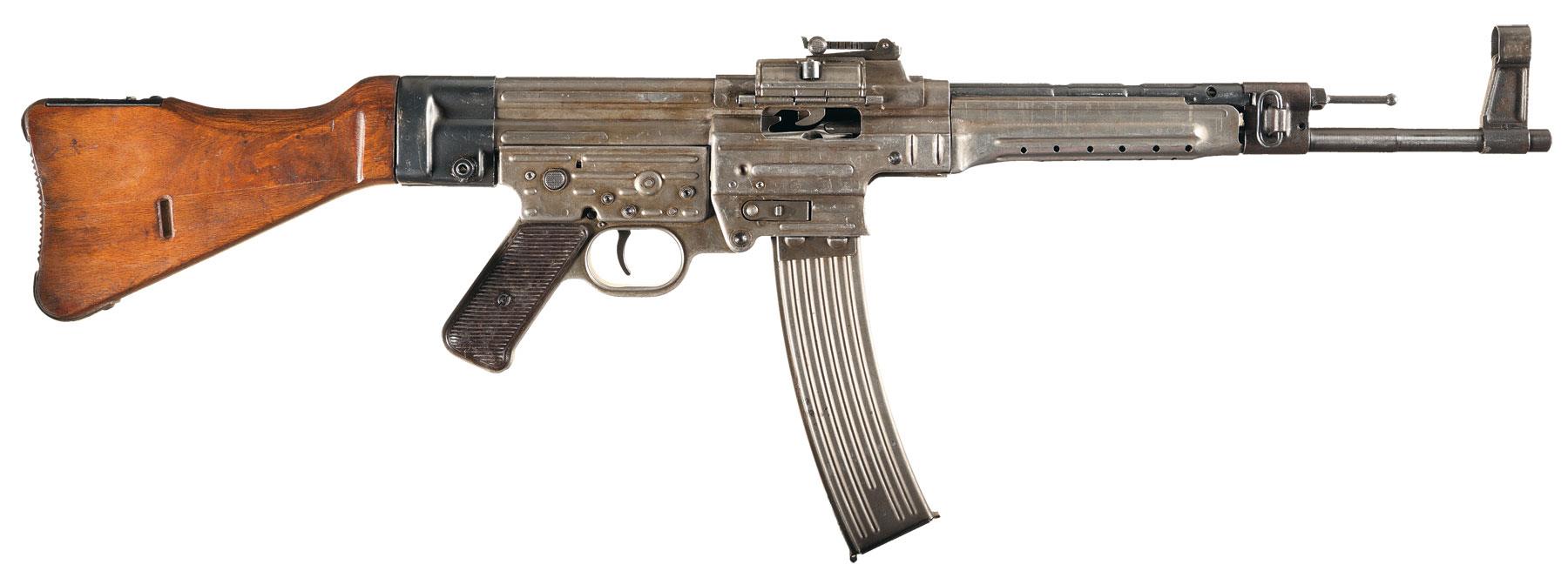This is part 4 of my series on military-grade weapons. In Part 1, I laid out the scope of this series as well as discussed full-automatic firearms and their regulations. In Part 2 and Part 3, I discussed the two features most obvious towards making an AR-15 a capable and dangerous weapon: its semi-automatic function and its ammunition capacity. While we concluded that both features make the AR-15 a capable firearm, we were not able to find a way to use these features as the foundation for a workable definition of military-grade. A large number of civilian firearms over the last century have these features. Since such weapons are in common usage by civilians, we could not reasonably call any of them military-grade. This assumes a definition of military-grade as of particular need and near-exclusive usage by the military.
The feature we’re going to discuss in this article is caliber. (note: I had initially planned to conclude the series in this article, but discovered there were ample points of interest to expand the discussion on some of the remaining features. I decided to err on the side of thoroughness).
The caliber of the AR-15 is .223 or, as NATO designates it using the metric system, 5.56x45mm.

While there are certain specification differences between ammunition labeled as .223 and 5.56, many popular AR-15s can shoot both. We will, therefore, consider those differences as beyond the scope of this discussion. The definition of caliber is the size of the barrel through which the projectile travels. This means that an AR-15’s barrel is in the ball bark of .223 inches, or 5.56 millimeters, in diameter.

The .223 is a bottlenecked, intermediate round. It was developed along with the first assault rifle variant of the AR-15 (later dubbed the M16). The developers had three clear goals in mind. First, to decrease weapon recoil compared to the full power cartridges used by battle rifles. Second, to increase magazine ammunition capacity and the single soldier’s combat load. And third, to provide higher velocity compared to slower moving and larger rounds.

Intermediate cartridges are directly related to the development of the assault rifle class of firearm. The term assault rifle derives from the German World War II weapon Sturmgewehr 44 (literally Storm-gun, meaning a weapon to storm or assault an enemy position). The Sturmgewehr is considered the first assault rifle and utilized the first intermediate round, the 7.92x33mm Kurz.


Why did assault rifles so rapidly become the standard-issue weapons of militaries across the world? Because it bridged the gaps between three different classes of firearm: carbines, submachine guns, and battle rifles.



Now, a squad of soldiers could carry only one type of firearm utilizing the same ammunition and capable of fulfilling the roles once carried out by three different weapons. An assault rifle had the length and light-weight of a carbine, the rate-of-fire of a submachine gun, and could approach the accuracy and effective distance of a battle rifle.
So, does this allow us to use the ammunition caliber of an AR-15 as the basis for considering it military grade? Not quite. There is one small problem to this approach. An assault rifle, given its selective fire capability (full-automatic), is considered by US law a machine gun and is highly regulated (as we discussed in part 1). An AR-15, to be manufactured and sold to the general public, cannot have selective fire capability. A civilian AR-15 is purely semi-automatic. Therefore, we cannot classify it as an assault rifle. In the civilian market, it is often either classified as a carbine, a modern sport rifle, or sometimes within the broader definition of varmint rifle.
It is my opinion, and the view of many firearm experts, that absent the selective-fire function, the advantages of an intermediate round are altogether canceled out. Without selective-fire, an AR-15 becomes either just another carbine (in its shortened form) or a substandard battle rifle (in its full-size form). Higher ammunition capacity and compactness can be achieved using true carbines (many of which fire pistol rounds). And, better performance and lethality can be achieved with a true battle rifle (which use larger full power cartridges). The AR-15 is the most popular civilian firearm because it’s affordable. Most true carbines and true battle rifles are two to three times the cost. That many consider the caliber to be sub-par is reflected by the prevalence of modifying AR-15s to either use pistol ammunition or full-power ammunition. This can better match a civilian AR-15 into a civilian weapon class.
Even the military is trying to improve upon the 5.56/.223. There have been many reports over the last fifty years of the M16 failing to provide sufficient stopping power. The most famous instance was in the Battle of Mogadishu in 1993. Rangers, SEALs, and Delta Operators all reported that indigenous militia high on narcotics were able to withstand a considerable amount of direct hits before being taken out of the fight. The US Army and the US Marines have been working to develop a round to better bridge the gap between standard intermediate rounds and traditional full power rounds for years. This includes the ongoing attempt to adopt the 6.8 Remington. Many improved intermediate rounds resulting from these efforts are in use by special operation units.
Given that civilian AR-15s are using such rounds as 6.5 Grendel, 6.5 Creedmoor, 6.8 Remington, 7.62 NATO, and even .300 Win Mag, I could claim that civilian innovation has surpassed slow-moving military bureaucracy.
We can conclude that the AR-15, absent selective-fire, falls into the broader category of carbines and battle rifles. This conclusion, and the reality that its caliber is less efficient within those categories, makes it impossible to designate the AR-15 as military-grade based on caliber. The vast majority of carbines and virtually all battle rifles are more effective than the AR-15 in their roles. This means classing only the AR-15 as military-grade would be useless for the purposes of gun control advocates. And, if we expanded the definition to include all carbines and battle rifles, we would once again cast too broad a net. We would render most civilian weapons utilized over the last hundred years as contraband.
We must conclude that caliber is not sufficient grounds to consider the AR-15 a military-grade weapon.
In the next article, we will discuss light-weight construction, length, and available accessories for the AR-15.
- The Liberty Hawk is Now on Medium - December 9, 2020
- Betraying Allies Is Not the Way to Avoid Being the World’s Police - August 14, 2020
- The Last Full Measure of Devotion - August 13, 2020

Ok people. Lets go over the term military grade ONCE again.
Liberals like to use it because it sounds scary in the news every five minutes when something happens. But heres the thing most people outside of the military don’t know, and even a few in the military weren’t aware of.
The term military grade isn’t what you think it is. It has NOTHING to do with the lethality of weapons. It has very little to do with a weapons capability outside of the battle field PERIOD.
Military grade applies to ANYTHING issued to military personnel. There is a military grade for peanut butter, T-shirt’s, eye glasses, belt buckles and even ink pens.
The term military grade refers to the MINIMUM standards for ANYTHING officially sanctioned by the US government to be standard issue to US Military Forces. It has nothing to do with lethality, or how dangerous an item is. It has to do with the manufacturing standards of EVERYTHING including Aircraft Carriers, Destroyers, Submarines, Tanks, Planes, Trucks, Cars, Tires, Helmets, Body Armor, T-shirts, Pants and even underwear. EVERYTHING issued to US service people that is basically paid for by the government and then provided to the individual, has to meet a standard as set forth by the US Military. THAT is referred to as (wait for it) . . . . . . Military Standards under the Minimum Military Grading system.
If you want to get technical, the Physical training test the military has to go through annually technically means that any personnel that pass are now officially Military Grade